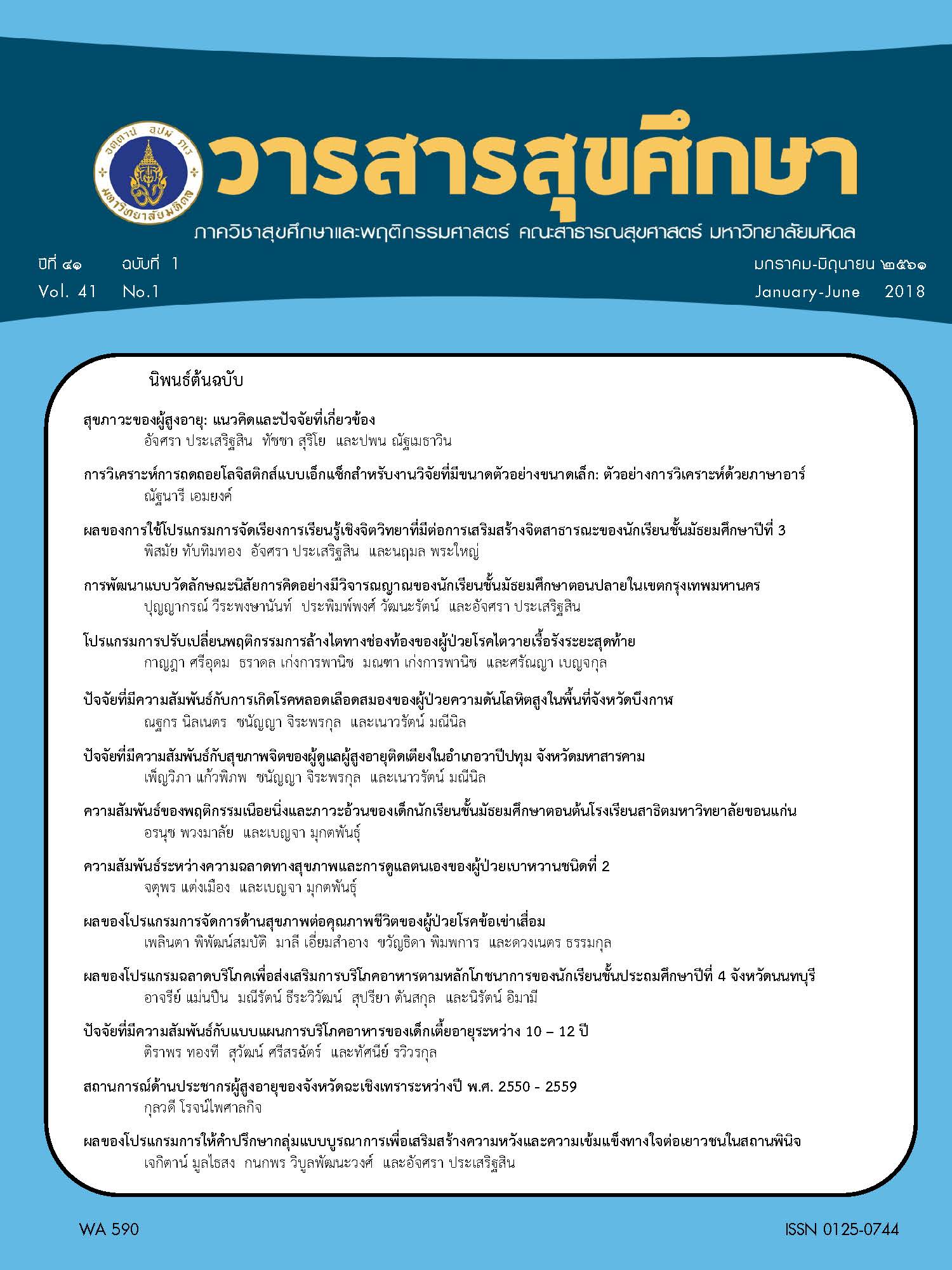Factors Related to Eating Patterns among Stunting Children Aged 10-12 Years
Main Article Content
Abstract
The objectives of this cross-sectional study were to investigate factors related to eating patterns among stunting children aged between 10-12 years old in Chanuman District, Amnatcharoen Province. The population consisted of 710 children by sampling method was cluster random sampling. Samples were 183 stunting children, age 10-12 years. Data collection was performed by using stunting screening test, questionnaires about predisposing factors, enabling factors, reinforcing factors and food record 3-days. The reliability of questionnaires was 0.705. Analyzed by Independent-sample t-test and Chi-Square test.
Results revealed that samples were stunted-normal weight children (68.86%). The analysis the predisposing factors, sample were male (56.83 %) and lived in single family (63.94%), factors of perceived, most children (80.87%), had good level of perception (average score of 2.49-3.25).With regard to the enabling factors, children received ≤10 baht per day and (88.50%) was paid for snacks and thay had their lunch at school every day (94.00%). drank school milk only in some days (56.30%). With regard to reinforcing factors, mothers mostly (85.79%) prepared food for children but they were free to eat as they please (45.90%). Most children didn’t receive snacks (84.70%). 3-days eating patterns showed that all stunting children gained the everage energy (977.35±205.60 kcal), protein (32.83±7.13 g), carbohydrate (154.41±33.38 g), fat (25.27±8.69g), calcium (215.29±49.35 g), and zince ( 3.61±0.86 g) lower than Dietary Reference Intake(DRI), and they ate rice (3.83±0.88 ladles), vegetable (2.59±1.34 spoons), fruit (0.53±0.66 parts), whole milk (0.51±0.34 parts) and oil (3.45±3.09g) lower than serving size according to the nutritional flag. except meats which were 6.41±1.50 spoons by serving size according to the nutritional flag. When comparing the eating patterns between stunted-underweight and stunted-normal weight children, it was found that the two groups of children gained different amount of average energy, protein, carbohydrate, fat, calcium, and zinc (p<0.05) and they had different eating patterns for rice, meat and whole milk (p<0.05). In summary, Two group of stunting children ate insufficient food, but stunted-normal weight children ate more quantity of food than stunted-underweight children. The analysis of the relationship found that gender factors were related to protein and zinc intake. (p=0.02)


